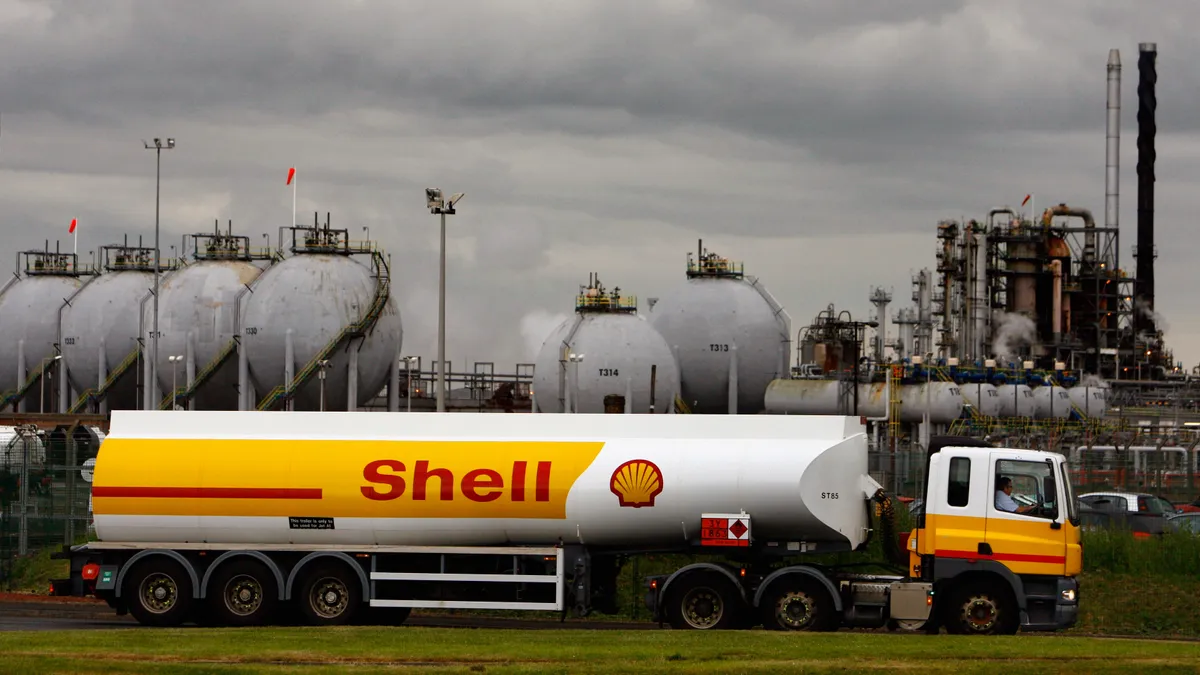Dive Brief:
- Shell updated its energy transition strategy Thursday, scaling back a carbon emissions reduction target for 2030 and scrapping a goal to further reduce its carbon footprint by 2035.
- The oil major said it aims to reduce the net carbon intensity of its energy products by 15-20% by 2030, compared to a 2016 baseline. The company previously said it would decarbonize its products by 20% by 2030, 45% by 2035 — a goal it has now discarded — and reach net-zero status by 2050. Shell said its 2050 target “remains at the heart of [its] strategy.”
- “When we provided the 2035 target, it was assumed the world would develop an accounting system for tracking carbon emissions. That has not happened which means we cannot track the 2035 target today,” a Shell spokesperson told ESG Dive over email. The spokesperson attributed Shell’s decision to retire its initial goal to the “uncertainty in the pace of change across many countries, and the broader energy transition.”
Dive Insight:
Shell said it’s prioritizing “value over volume” when it comes to generating and selling power and is concentrating on select markets and segments and, as a result, has shifted its focus to commercial customers over retail customers. The company expects a lower total growth of power sales leading up to 2030 because of the revised strategy, which led it to modify its net carbon intensity target for the end of the decade, according to the spokesperson.
This is the first time the company has updated its energy transition strategy since unveiling it in 2021, a year after the company pledged to reach net-zero emissions by mid-century. The oil major has said it aims to reduce emissions from its operations and from the fuels and other energy products it sells to its customers, per its website. Shell also said it would capture and store any remaining emissions using technology or balance them with carbon offsets.
Though Shell’s strategy aims to decarbonize its operations, it focuses on the net carbon intensity instead of absolute emissions of its products. The former gives companies room to increase their overall carbon footprint while using offsets or renewable energy measures to balance out their impact on the environment. Carbon intensity metrics technically allow companies to mask their total emissions growth, whereas absolute emissions metrics are more transparent and provide a straightforward measure of the total emissions emitted.
Despite watering down some of its carbon reduction goals, Shell introduced a new target to reduce emissions generated by customers who use its oil products — which factor into the company’s scope 3 emissions — to help accelerate decarbonization in the transport sector. The company aims to reduce its scope 3 emissions by 15-20% by the end of the decade, compared to a 2021 baseline.
The oil major said it would invest $10-15 billion in low-carbon energy solutions between 2023 to 2025. The company also said it has reached 60% of its target to halve its scope 1 and scope 2 emissions by 2030, compared to a 2016 baseline.












